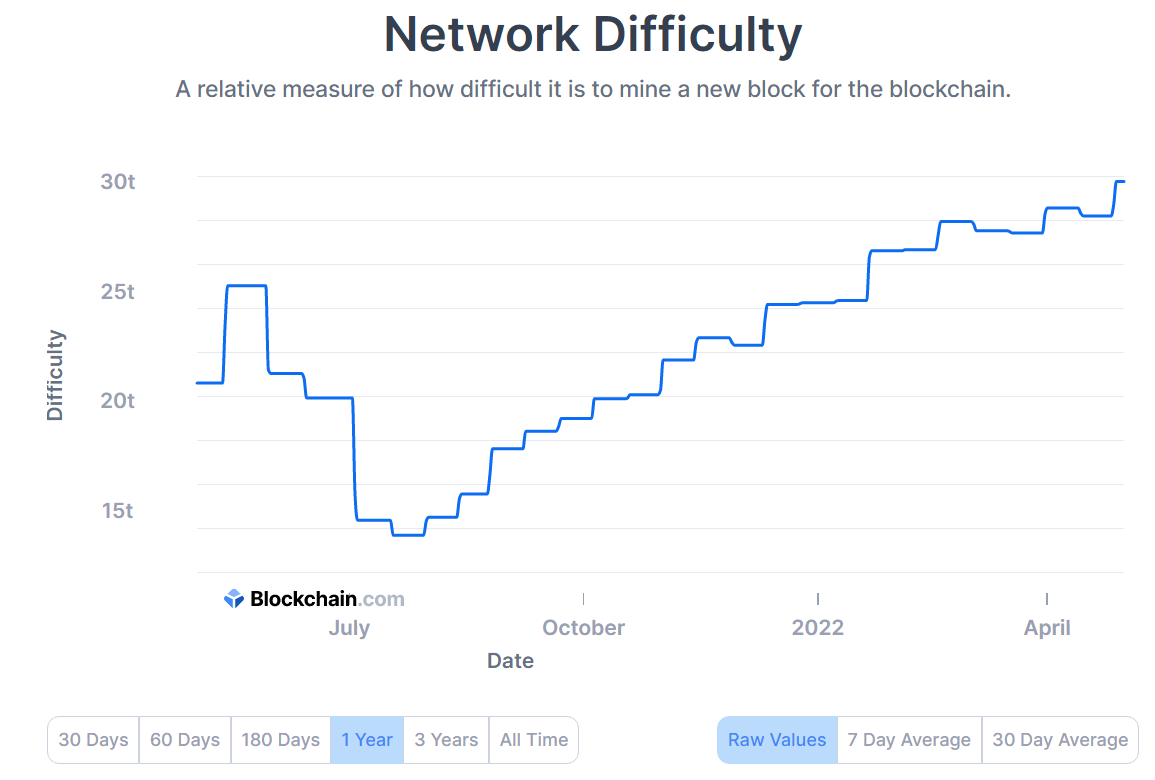What is Hash Rate and Why is Important for Bitcoin?

Bitcoin often referred to as digital gold, uses a process called mining to validate transactions and at the same time mint new coins that enter the market.
This process known as Proof of Work (POW) is currently powering the 2 most popular blockchains available in the crypto space, Bitcoin and Ethereum.
In the cryptocurrency ecosystem, mining involves the computation of complex mathematical problems that need to be solved to successfully validate transactions and create new coins.
This task of validating and minting new coins is undertaken by miners, who are spread out across the globe and use high-powered computer processors to run these calculations.
Hash rate is the power at which these computers can perform the calculations.
Let’s take a deeper look…
Bitcoin or other blockchain networks operate using a layer of network security called cryptography. This layer is responsible for validating the transactions and making sure that they are not duplicates or fake.
To achieve this, the network layer must solve a set of complex problems until a valid result or “hash” is created.
The process of generating this hash is random and can require the computer to run millions of calculations before a valid hash is created. This is why the speed of the mining computer plays a key role in its mining. It is this speed that is referred to as hash rate.
The higher the hash rate the higher the chance of generating a valid hash and validating a transaction.
Hash rate is usually measured in the units of:
- 1 KH/s: 1000 calculations per second
- 1 MH/s: 1 Million calculations per second
- 1 GH/s: 1 Billion calculations per second
- 1 TH/s: 1 Trillion calculations per second
- 1 PH/s: 1 Quadrillion calculations per second
- 1 EH/s: 1 Quintillion calculations per second
Why is it important?
Hash rate is a key security metric for any blockchain network. It is a rough estimate of how secure a blockchain might be from potential attacks or scam attempts.
As more miners join the network, the hash rate increases and it becomes more difficult for scammers or hackers to attack the network and sabotage it.
Since blockchains operate using a trustless protocol, it is possible that a miner can get enough mining power to control 51% or more of the entire blockchain and manipulate transactions to its advantage.
This is why having a robust global distributed mining network is important to keep a blockchain safe, secure, and decentralized. Plus, as more miners join the network increasing the hash rate, the more difficult it becomes for an individual miner to gain control of 51% of the network.
What is Bitcoin’s current hash rate?
Bitcoin right now operates at a hash rate of 220.94 TH/s. This means the network has a computational capacity to run 220.94 Trillion calculations per second.

What causes the Hash Rate to change?
Mining typically is a capital-intensive process, that requires equipment, energy, manpower, maintenance, and time. Miners are usually rewarded with new coins for every successfully mined block, which allows the miners to make a profit.
Miners have complete freedom over which coins they want to mine by performing a cost-to-profit analysis. When the hash rate is high the mining difficulty increases and it requires more power to valid a block whereas a lower hash rate sees a lower difficulty and requires less power to validate a block.
Miners can decide when and which coin they want to mine based on the difficulty and their own cost-to-profit analysis.
Hence this dynamic nature of miners results in the hash rate changing with time.
What is mining difficulty?
Closely tied to hash rate, mining difficulty is the metric that calculates how difficult it is to mine a particular block of a blockchain.
As the number of miners increases in a network over time, more hash rate is available making mining more competitive, difficult, and expensive. This can result in longer wait times for blocks to confirm ultimately rendering the blockchain unusable.
So, to fix this, the difficulty is adjusted by the blockchain periodically to accommodate changes in hash rate.
The difficulty is adjusted up or down based on the number of miners and the total hash rate in play.
Bitcoin adjusts its mining difficulty every 2016 block, which is roughly every 2 weeks to make sure that the blocks are successfully mined every 10 minutes.

If it takes longer than 10 minutes to mine the blocks, the difficulty reduces, while if it takes less than 10 mins to mine the blocks the difficulty increases.


Comments ()